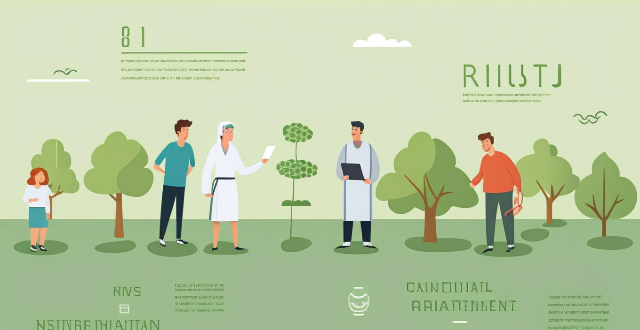Disaster risk management is a crucial component of achieving sustainable development goals (SDGs). By reducing the impact of natural disasters and other emergencies, it helps to protect lives, livelihoods, and infrastructure. This supports the achievement of several SDGs, including poverty reduction, health promotion, education enhancement, and economic growth stimulation. Disaster risk management contributes significantly to poverty reduction by safeguarding people's homes, businesses, and infrastructure from damage or destruction. It also promotes health and well-being among affected populations by minimizing the impact of disasters on health facilities and services. Additionally, disaster risk management plays a vital role in ensuring that schools remain operational and accessible during and after disasters, promoting equitable access to learning opportunities. Lastly, it supports economic stability and growth by protecting critical infrastructure such as transportation systems, communication networks, and power grids.

How Can Disaster Risk Management Contribute to Sustainable Development Goals?
Disaster risk management is a crucial component of achieving sustainable development goals (SDGs). By reducing the impact of natural disasters and other emergencies, disaster risk management helps to protect lives, livelihoods, and infrastructure. In this way, it supports the achievement of several SDGs, including those related to poverty reduction, health, education, and economic growth.
Key Points:
- Reducing Poverty: Disaster risk management helps to reduce poverty by protecting people's homes, businesses, and infrastructure from damage or destruction. This ensures that individuals and communities can continue to earn incomes and provide for their families.
- Promoting Health and Well-being: By minimizing the impact of disasters on health facilities and services, disaster risk management contributes to better health outcomes for affected populations. It also helps to prevent the spread of diseases in the aftermath of a disaster.
- Enhancing Education: Disaster risk management plays a vital role in ensuring that schools remain operational and accessible during and after disasters. This helps to minimize disruptions to education and promotes equitable access to learning opportunities.
- Stimulating Economic Growth: By protecting critical infrastructure such as transportation systems, communication networks, and power grids, disaster risk management supports economic stability and growth. This helps to create jobs, increase productivity, and foster innovation.
Detailed Explanation:
Reducing Poverty:
Disaster risk management contributes significantly to poverty reduction by safeguarding people's homes, businesses, and infrastructure from damage or destruction. When disasters strike, they often have a disproportionate impact on poor communities, pushing them further into poverty. By implementing effective disaster risk management strategies, such as early warning systems, emergency preparedness plans, and robust infrastructure, the negative effects of disasters can be mitigated. This ensures that individuals and communities can continue to earn incomes and provide for their families, ultimately contributing to poverty reduction efforts.
Promoting Health and Well-being:
Disaster risk management is essential for promoting health and well-being among affected populations. Natural disasters can cause significant damage to health facilities and services, leading to a lack of access to essential medical care. By minimizing the impact of disasters on these facilities through proper planning and preparedness, disaster risk management helps to maintain the continuity of healthcare services. Additionally, it helps to prevent the spread of diseases in the aftermath of a disaster by ensuring that clean water sources are protected and sanitation systems remain functional.
Enhancing Education:
Disaster risk management plays a vital role in ensuring that schools remain operational and accessible during and after disasters. When schools are damaged or destroyed due to natural disasters, students are forced to miss out on valuable learning opportunities. By implementing measures such as strengthening school buildings, establishing emergency response plans, and providing training to teachers and staff, disaster risk management helps to minimize disruptions to education. This promotes equitable access to learning opportunities for all students, regardless of their background or circumstances.
Stimulating Economic Growth:
Disaster risk management supports economic stability and growth by protecting critical infrastructure such as transportation systems, communication networks, and power grids. When these systems are damaged or destroyed due to natural disasters, they can have a severe impact on the economy. By implementing effective disaster risk management strategies, such as investing in resilient infrastructure and developing contingency plans, the negative effects of disasters on the economy can be minimized. This helps to create jobs, increase productivity, and foster innovation, ultimately contributing to sustainable economic growth.